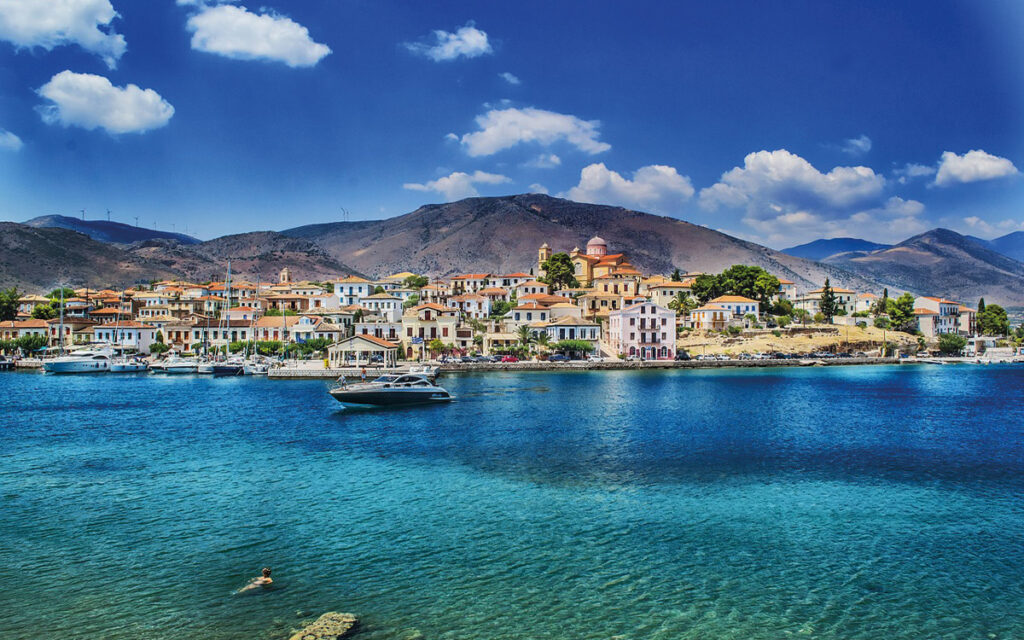Corinthian Gulf
Exploring the Enchanting Beauty of Corinthian Gulf in Greece
Introduction:
Nestled between the Peloponnese Peninsula and mainland Greece, the Corinthian Gulf stands as a testament to nature’s breathtaking artistry. This captivating stretch of water, flanked by historical landmarks and surrounded by picturesque landscapes, has long been a source of fascination for locals and travelers alike. Let’s embark on a journey to uncover the hidden treasures and cultural richness that define the Corinthian Gulf.
Geography and Formation:
The Corinthian Gulf, part of the larger Ionian Sea, stretches approximately 100 miles in length and is characterized by its narrow and sinuous shape. This body of water owes its existence to the intricate tectonic processes that have shaped the Greek landscape for centuries. The Gulf is flanked by towering mountains, with the Peloponnese to the south and the mainland to the north, creating a dramatic and awe-inspiring backdrop.

Historical Significance:
The Corinthian Gulf has played a pivotal role in the history of ancient Greece. The narrow Isthmus of Corinth, a narrow strip of land connecting the Peloponnese with mainland Greece, was a strategic crossroads for both trade and military expeditions. To expedite the journey between the Aegean and Ionian Seas, the ancient Greeks even constructed the Diolkos, a paved track where ships could be dragged overland. Today, remnants of this engineering marvel stand as a testament to the ingenuity of ancient civilizations.
Modern Marvels:
As we traverse the Corinthian Gulf, modern engineering marvels come into view. The Corinth Canal, a 6.4-kilometer artificial waterway, connects the Gulf of Corinth with the Saronic Gulf, offering a shortcut for maritime traffic. The sheer cliffs that rise on either side of the canal create a surreal spectacle, providing visitors with an unforgettable experience as they witness ships navigating the narrow passage.
Scenic Splendor:
Beyond its historical significance, the Corinthian Gulf is celebrated for its scenic splendor. The coastline is dotted with charming villages, each with its unique charm and character. From the bustling town of Corinth to the idyllic coastal villages like Loutraki and Galaxidi, the Gulf offers a diverse tapestry of landscapes. Visitors can explore pristine beaches, lush vineyards, and olive groves, immersing themselves in the rich tapestry of Greek culture and hospitality.
Adventure and Recreation:
The Corinthian Gulf is not just a haven for history enthusiasts; it’s also a playground for outdoor enthusiasts. Adventure seekers can indulge in water sports such as sailing, windsurfing, and kayaking, taking advantage of the Gulf’s favorable winds and clear waters. For those who prefer a more relaxed pace, a leisurely cruise along the Gulf’s coastline unveils stunning vistas and a tranquil ambiance.
Culinary Delights:
No exploration of the Corinthian Gulf would be complete without savoring the local culinary delights. The region is renowned for its fresh seafood, olives, and citrus fruits. Traditional tavernas offer a feast of flavors, allowing visitors to indulge in the authentic tastes of Greece while enjoying the picturesque views of the Gulf.
Conclusion:
In conclusion, the Corinthian Gulf in Greece is a destination that seamlessly blends history, natural beauty, and modern ingenuity. Whether you are drawn to its ancient archaeological sites, mesmerized by its stunning landscapes, or enticed by the prospect of adventure, the Gulf offers a diverse array of experiences for every traveler. So, set sail on a voyage of discovery and let the Corinthian Gulf enchant you with its timeless allure.



